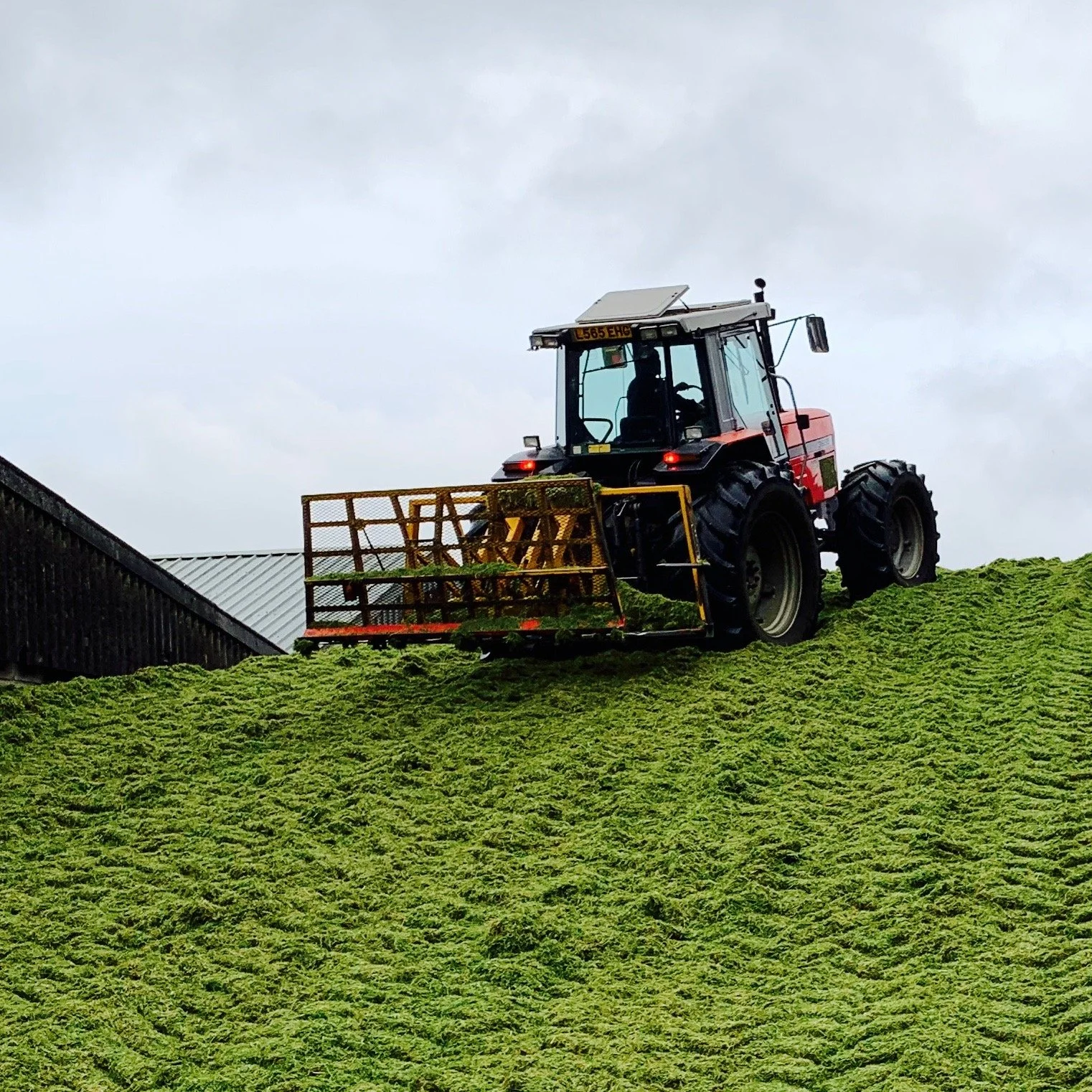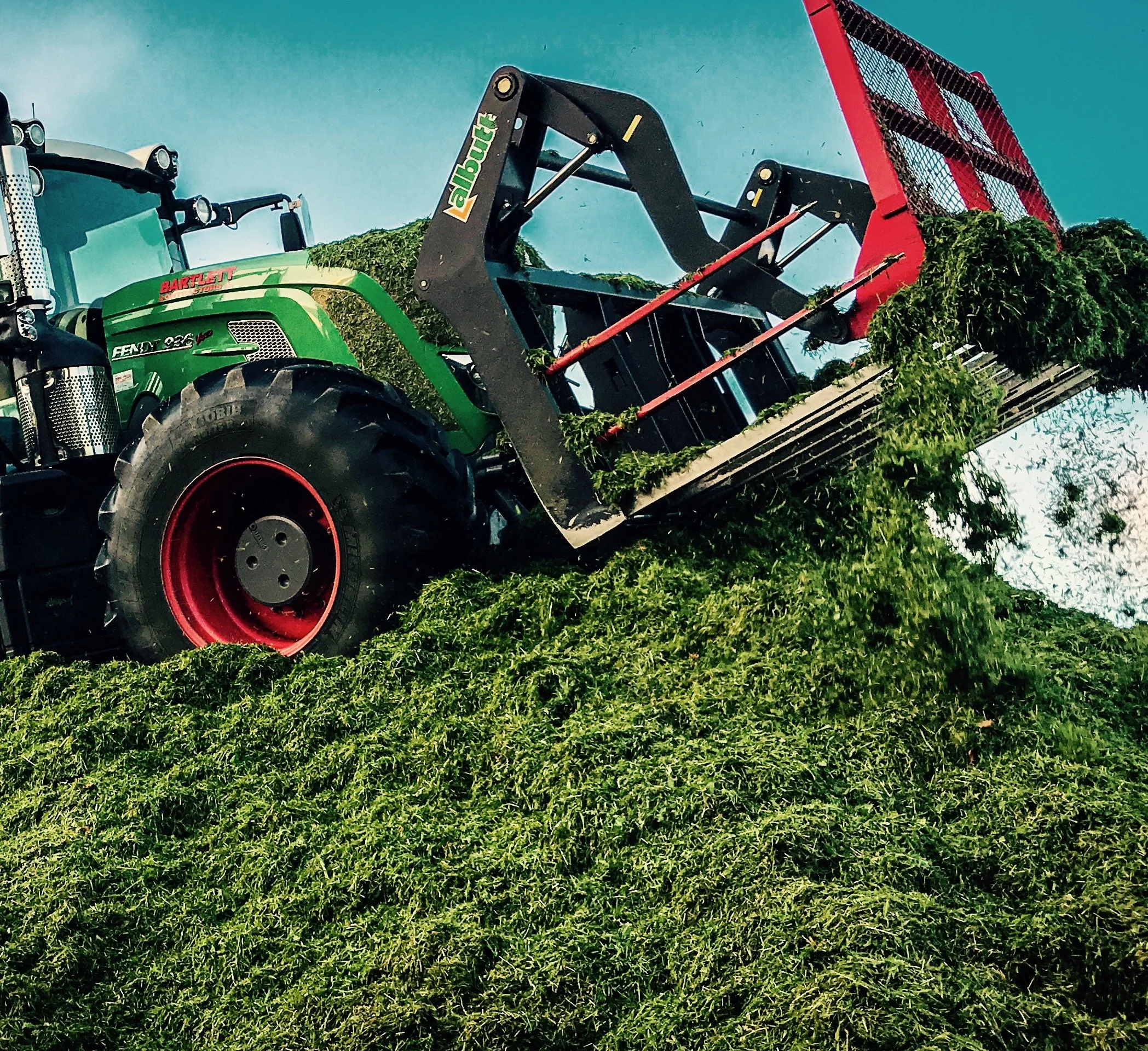Silage Clamps and Big Tractors
Big tractors; farmers, contractors and little boys all love ‘em. Quite a few little girls and some big boys love them too – big is almost always better when it comes to tractors. If you’re making good silage you will be wanting big tractors too as big heavy tractors equal more compaction. Silage compaction has been covered before but it’s worth another quick review. Good consolidation eliminates air, improves density and that aids fermentation and improves aerobic stability.
So a big tractor on the clamp can only be a good thing can’t it?
I’m going to be controversial here; by saying usually the answer to that question is NO it almost certainly is not. If you’re still reading and haven’t gone off in a huff, I’ll explain the reasoning. It’s all the fault of the British Standards Institute together with the lack of farmers. We are (in the UK at least) extremely fortunate to have the BSI working on our side but over time the saviour has become the problem.
In the bad old days, farmers used to build a “shed” or a “pit” using experience, judgement and whatever was to hand, or cheapest. Unfortunately many fine structures were not quite up to the job of resisting a light breeze or a frisky bullock and in an attempt to produce more robust farm building the BSI stepped in with the BS5502 code. This gave designers some guidelines of what sort of loads the building might need to cope with. Part 22 of the code deals with the loads on storage structures and gives us all the useful loadings for every agricultural product from apples to wool.
Silage is different of course as it doesn’t behave like a pile of wheat or sugar beet. And then there is a tractor driving around on top of it to consider as well. So the design loadings for silage are a bit more prescribed than for barley/wheat/oilseed rape. The version of the code that I first started working with gave the designer an option for compacting tractors of 6t, 8t or 10t gross weight but that was back in the day when a 590 or 7610 were referred to as “the big tractor”.
Today things have moved on a bit, but while the bulk density of wheat has only increased by a few percentage points, average tractor weights have just about tripled! Today a clamp design using BS5502 – as required by the regulations – has the choice of either 8t or 10t for the maximum tractor weight.
Clearly as an industry we have a problem here. We are in a mess before we even start to introduce the likes of the JCB 435S or Volvo L90H. These grass shifters weigh in at around 15t and 17t….
Does the British Standard 5502 need reviewing?
It certainly does but in the latest review the BSI made it quite clear that it really wasn’t worth their time to review these loads. In today’s commercial world, these institutions need to sell their design codes to pay for the staff. The BSI see the potential market as so small, they have decided it just won’t pay to re-write this part of the code.
The SSAFO regulations require your clamp to be designed to BS5502 part 22 as a minimum. And that’s part of the problem, it’s the absolute minimum requirement and it’s not really sufficient. Now there are design codes that you (or the engineer) can use to “model” the loadings from heavy vehicles like these mighty loading shovels, but most designers use 5502 thinking they are doing the right thing and this leads to clamps being “under designed.”
“We use a tractor with buckrake not a loading shovel”
For those farmers feeling quietly comfortable because they don’t put those contractor shovels on their clamps – there is more bad news.
I have recently been involved in a couple of clamp projects where the clamps will be filled with traditional tractors. On the face of it, the loads will be fine, the buckrake tractor is just less than nine and a half tonnes and the compactor tractor isn’t even eight tonnes. But put the vehicles on a weighbridge and things get out of hand very quickly. The buckrake itself weighs almost 1.5t and the tractor has 2.5 t of ballast fitted. That takes this one to almost 13.5t and the compactor tractor is over twelve tonnes once it’s ready to roll.
Bartlett Contractors Fendt Buckrake Tractor
And that hidden weight is the problem. Back in the day a tractor’s all up weight was unlikely to come anywhere near to the clamp limits but today it’s extremely likely to overload the clamp walls.
Your choice of walls is also (almost) irrelevant too – everything has design limits. Doesn’t matter if it’s a concrete wall or a pile of earth, once it’s over loaded it will fail. Cutting into a hillside is just about the only “safe” wall structure.
So why don’t we see clamps collapsing everywhere?
It comes down to a couple of things, firstly today’s silage tends to be higher dry matter and this reduces the forces on the walls. Secondly there is always a safety factor built into a design. For most structures this is 40% and it allows for unknowns and cock-ups. The safety factor also ensures the “design life” of the structure.
Let’s imagine walls built from L shaped concrete panels in a silage clamp. The wall units will have a “design life” of around 20 years. Any structure will have a load it is designed to accept – usually without cracking or bending – and then a greater load that it can carry but will cause damage to the unit. The first is the service load and the second the ultimate load - the difference between the two must to be that 40% safety factor.
The design life assumes the units are used within their normal “service loads”. If we start using the walls to their ultimate capacity because the tractor is too big, then the design life is going to be compromised – i.e. shortened. So an overloaded clamp won’t necessarily fall over but its life is inevitably shortened.
So how to cope with big tractors on a silage clamp
If you can, design your clamp to suit the biggest piece of kit you’re ever likely to allow onto the silage. If that day has already passed, then you can control the traffic. The loads on the walls are massively influenced by the height. Large tractors might well be OK at 2/3rds the wall height. They are certainly OK if they don’t get close to the walls and only run 3 or 4 metres away from the walls. It certainly is possible to safely operate large kit on an old clamp, it just needs to be carefully managed.
If you need any further information or help designing a clamp for big tractors or avoiding overloading an existing clamp, or for any of the other aspects covered in this series – contact Jeremy Nash at jeremy@silageconsultant.co.uk


